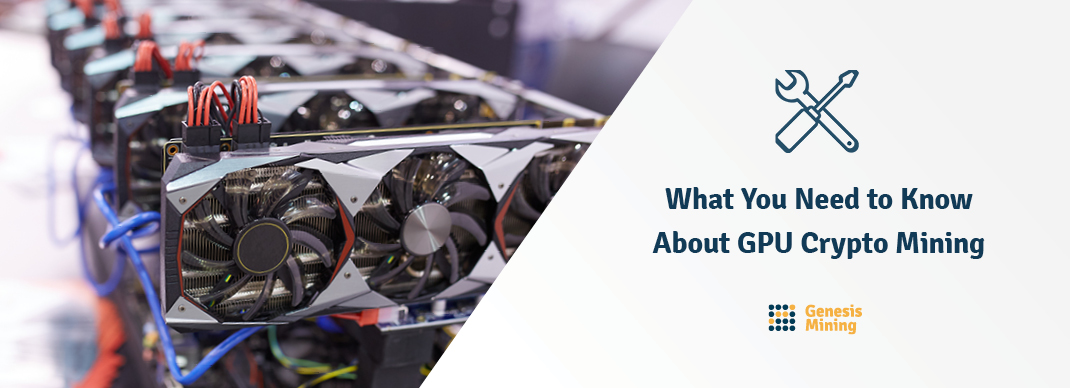[ad_1]
What if you could use everyday computer hardware to make money while you slept? Wouldn’t you start right away?
I caught the cryptocurrency bug shortly after the launch of Bitcoin and became very passionate about mining after that. My interest grew to the point that it became a career, and these days I’m head of mining operations for Genesis Mining, one of the largest crypto mining companies in the world.
It’s not exactly mainstream behavior to set up and run your own crypto mining rig, but the tools I was using back in the day were completely common and accessible. The same is true today: graphics processing units, or GPUs, are near the heart of any electronic device that’s connected to a screen and produces an image. From a simple spreadsheet on your computer screen to a high-definition movie playing on your smartphone, GPUs do the math that’s responsible for placing millions of pixels on a display.
It turned out that they were also well-suited for performing the math necessary to mine cryptocurrency. “Why isn’t everyone doing this?” I thought.
GPUs Were a Paradigm Shift for the Crypto Mining World
The exact timing is a little hazy, but the cryptocurrency community had a collective lightbulb moment between 2010 and 2011: rather than crunch crypto with a computer’s standard central processing unit (CPU), they could mine currencies more effectively by repurposing high-powered graphics cards as mining hardware.
CPU mining was distinctly the norm in the early days. It made all the sense in the world at the time — a CPU is like the main character in a computer’s quest to solve a problem. It performs all the heavy mathematical lifting that makes a computer’s parts work together, so it was the obvious choice of tool for computationally intensive processes.
But the introduction of Bitcoin in January 2009 presented computers with an entirely new kind of process to handle: that of crypto mining. As more CPU-based miners entered the fold, it made the overall network far more robust and reliable. But this came with the inescapable cost of making individual miners less effective, and therefore less profitable. People who wanted to use their computer hardware to solve complex cryptographic math for profit needed improved tools to stay ahead of the crowd.
GPU mining represented a sea change for the community, as this hardware was many times more effective at mining. Conventional CPUs were something of a blunt object in pursuit of cryptocurrency. GPUs were well-sharpened samurai swords by comparison. They were so much more effective than the preceding technology that they set a new standard.

GPU Mining Helps Build Crypto Communities
Just as it’s easier to play a certain sport when you already have all the equipment, GPU mining made it easy for hobbyists and tinkerers to get on board with crypto. These chips are rather commonplace, so they’re affordable and easy to come by. And as they happen to be such refined tools for crypto mining in particular, this means that people with GPUs at their disposal are the first power players to emerge in any new cryptocurrency.
But even if GPU mining hardware is significantly advanced over outdated alternatives, it still holds a bit of homegrown vibe and appeal by virtue of being so commonplace. The humans running these systems talk to each other and help shape the future for whatever coin they’re mining with them. As popular cryptocurrencies like Bitcoin start requiring industrial-scale operations in order to see any mining success, GPU miners are the ones who get to say, “I remember you before you were famous.”
This makes GPU miners something like the exploratory pioneers of crypto — they’re the first to visit new territory and claim significant parts of it as their own. And successful pioneers make sure to know their neighbors.
GPUs Are Useful for Many Other Applications Beyond Crypto
GPUs were already important technological components well before cryptocurrency was a thing, and there’s no reason for this to change. They are multipurpose tools that might be fairly called a Swiss Army Knife of computing. From smartphones to personal computers to artificial intelligence research, a GPU is a flexible jack-of-all-trades in the computing world. It just happens to excel at crypto mining as well.
This means GPUs remain eminently useful after “retiring” from mining. They retain resale value and can be deployed into other systems that work to accomplish entirely different goals. The new owner can simply configure the chip to work under new circumstances. This hardware is no one-trick pony — they are dynamic and useful well beyond crypto.
If GPUs have a fatal flaw in the mining world, it’s this: they’re not built exactly for this purpose. You could argue that GPUs don’t excel in any single arena because they do pretty good at different computing applications across the board. Whether they deliver supercharged gaming graphics to your computer monitor, render video at an edit station, or digitally retouch a photographer’s work, GPUs are here to stay.
As for me, I like using them to make money while I sleep!
[ad_2]
Source link



